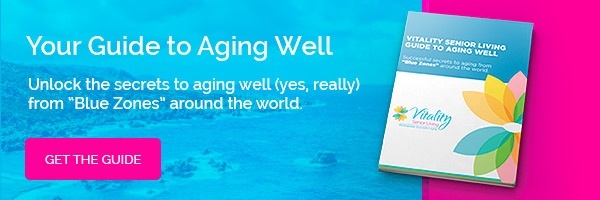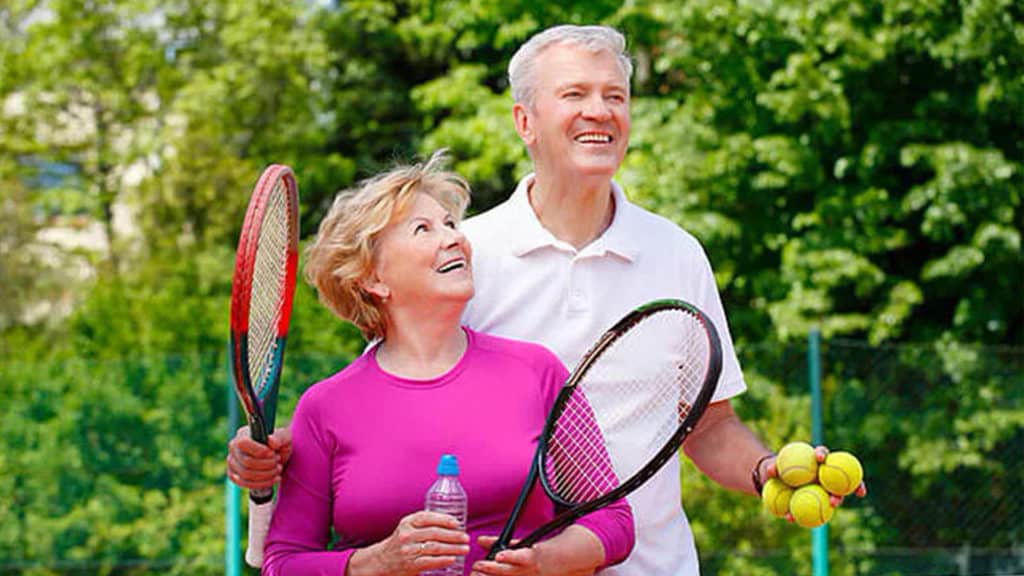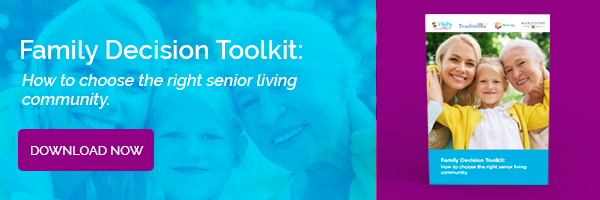For the most part, when it comes to health basics, we know what is bad for us, and we know the implications. But do we know what’s good for us?
Most of us have seen the Surgeon General’s warning on the side of a pack of cigarettes. Older adults have been around long enough to know that smoking, heavy drinking, and overindulging in the wrong foods take a toll on one’s health.
But we don’t often stop to consider that the opposite also is true. Science has increasingly shown that an active senior lifestyle, combined with healthy choices, can literally add five or more years to one’s life.
The Healthy Living Boost
One research team looked at the difference in life expectancy between active and inactive individuals. The team considered self-reported data on leisure-time physical activities and body mass from nearly 650,000 people over the age of 40 and found that being active really does make a difference.
“A physical activity level equivalent to brisk walking for up to 75 minutes per week was associated with a gain of 1.8 years in life expectancy,” the team writes. Being active at the level recommended by the World Health Organization, meaning a minimum of 150 minutes of brisk walking per week, was associated with an overall gain of life expectancy of 3.4 years to 4.5 years.
The authors conclude that even a modestly active lifestyle can add years to one’s life, with high levels of activity adding even greater health benefits.
Healthy activity can take make forms. For instance, some studies have shown powerful benefits around yoga and tai chi. “Yoga has a powerful effect on stress and hypertension and can help people reduce the amount of medication they need,” says Amy Wheeler, yoga professor at California State University at San Bernardino. In a review of 17 studies published in Evidence-Based Complementary and Alternative Medicine, researchers reported “significant reductions” in blood pressure based on three basic elements of yoga practice: postures, meditation, and breathing. It may be that yoga’s slow, controlled breathing helps manage blood pressure levels.
Some seniors in fact are advocating for more activity in their communities. Older adults in Falmouth, Massachusetts, for example, have been petitioning for pickleball in their local senior center. A team sport somewhat like tennis, pickleball involves players volleying a ball back and forth over a net using a wooden racquet.
It’s important to note that “activity” need not mean a lap around the block. For many older adults, vigorous daily exercise is not an option, but there are other forms of activity that can be just as important in maintaining health and prolonging life.
The non-profit senior service organization Eskaton advocates an active social life as a way to add years to one’s life. Maintaining friendships and engaging in social encounters can help older adults stay mentally sharp, reduce stress, and enhance their overall level of wellness.
All this relates directly to the choices that older adults make about their living situation and lifestyle.
The Active Senior Lifestyle
For many older adults who live on their own, remaining active can be a challenge. Social ties are harder to maintain, and it may not always be easy to get out of the house, even to just do one’s usual chores.
Nor has the traditional senior community been historically perceived as conducive to an active lifestyle. Many believe the “retirement community” or “nursing home” to be a lackluster environment, with little opportunity to engage in life’s many diversions.
Still, the data make it clear that some level of activity is vital to an older person’s well-being.
Fortunately, the rise of a new style of senior community is changing the equation for many older Americans. The idea of assisted living as a vibrant, enriching experience, while still new to many, is beginning to take hold.
In this re-envisioned community lifestyle, older adults engage in a range of meaningful activities, including art, music, and culinary experiences. They socialize and experience a wide degree of freedom in choosing their varied daily activities.
That kind of dynamic environment is vital for long-term well-being. “People get into middle age, and their health begins to ratchet down, often due to specific diseases that frequently occur due to poor lifestyle,” says Dr. Mike Joyner, a physician-researcher at the Mayo Clinic in Rochester, Minnesota.
With the evidence mounting that longevity and activity are intimately tied together, today’s older Americans are fortunate to have a wide variety of community settings in which they are able to enjoy a sense of renewed purpose in their later years. An active senior lifestyle is easily within reach for those willing to seek it out—read through our blog post on healthy living for older adults.




